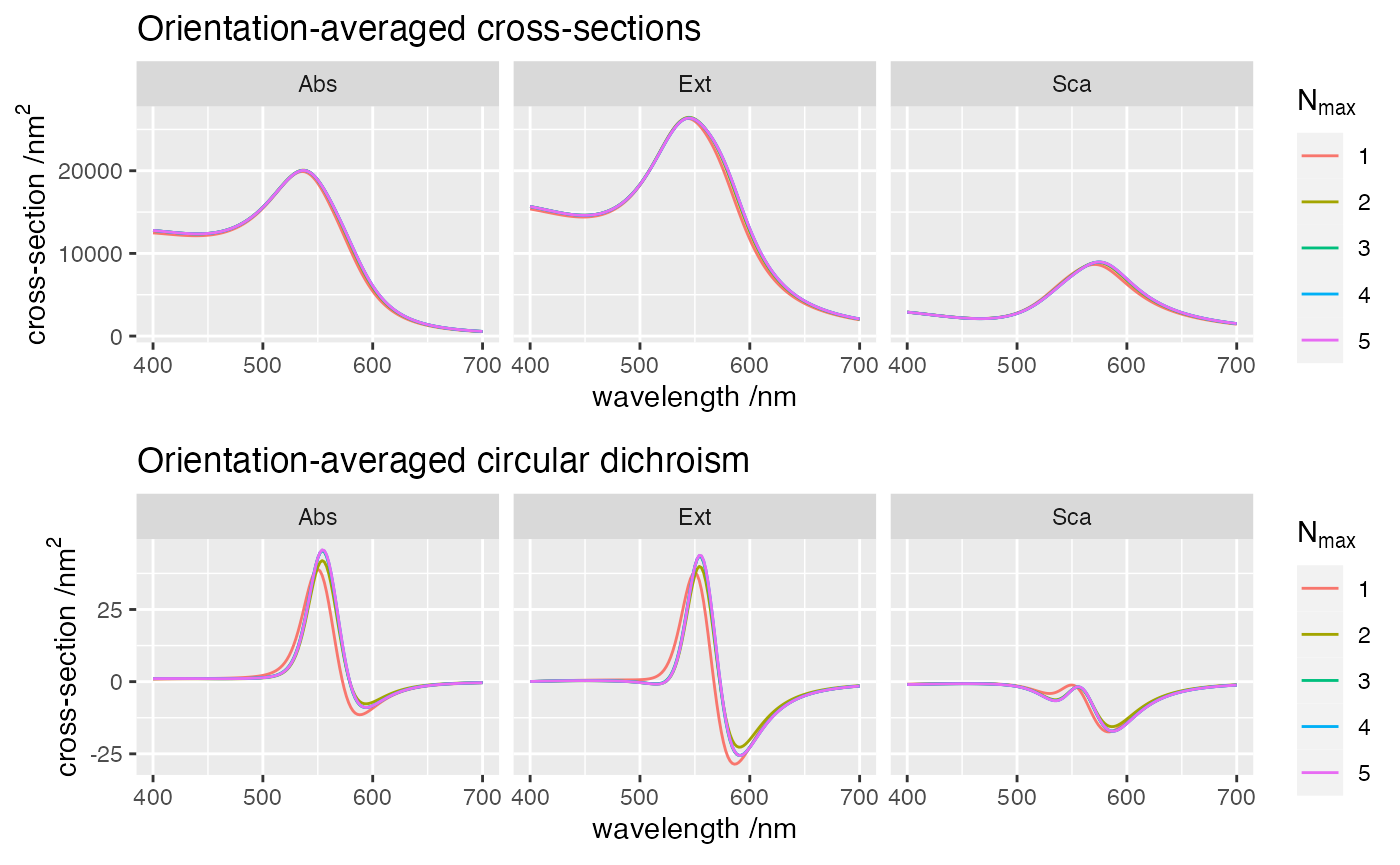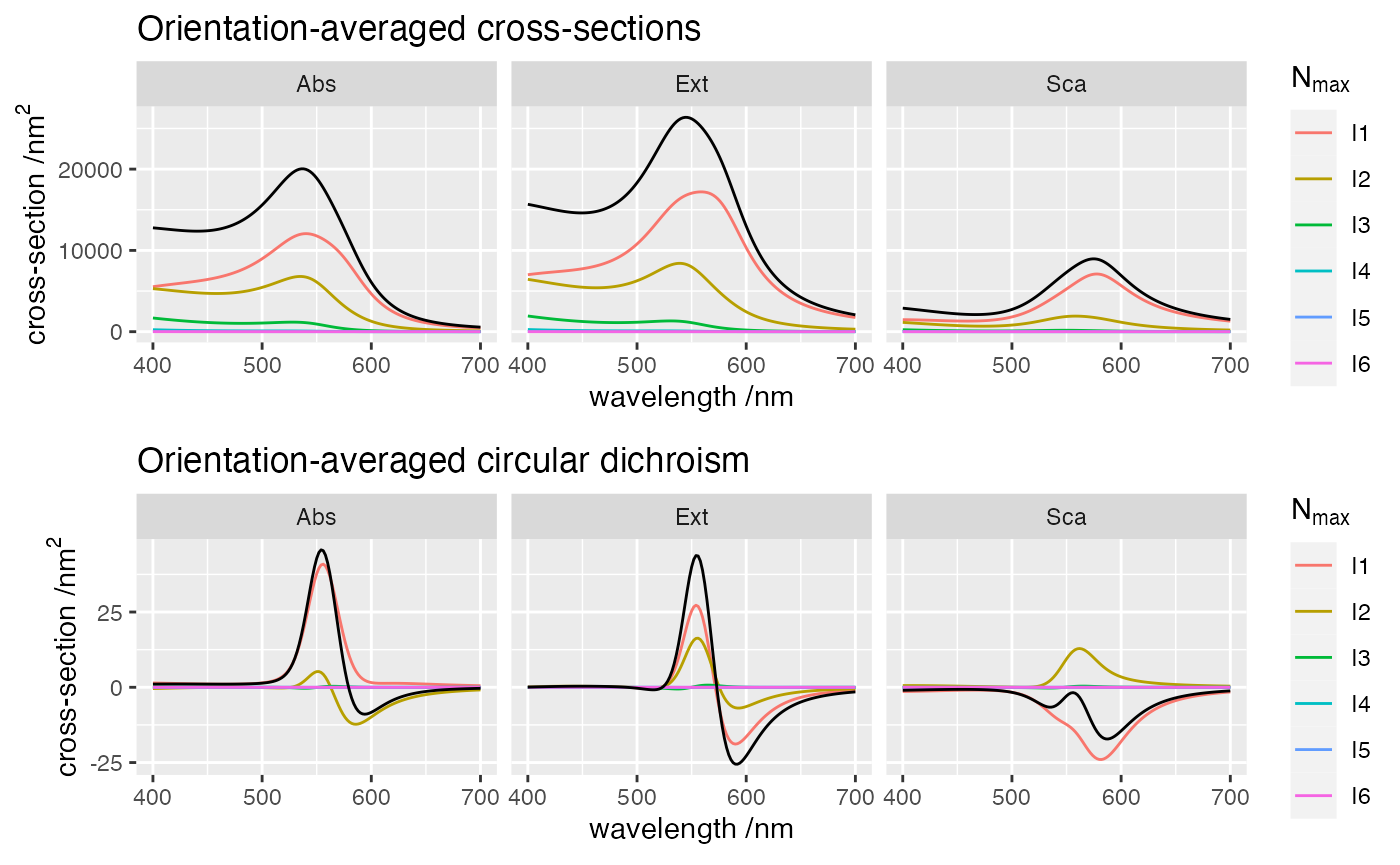Convergence with respect to maximum multipole order of individual scatterers
05 December, 2023
Source:vignettes/11_convergence/11_convergence.Rmd
11_convergence.RmdObjective
This example checks the convergence of orientation-averaged cross-sections with respect the maximum multipolar order describing individual scatterers. The structure consists of four gold spheres in water arranged in a helix.
This simulation uses the following input file
ModeAndScheme 2 3
MultipoleCutoff 6
Wavelength 400 700 150
Medium 1.7689 # epsilon of water
OutputFormat HDF5 cross_sections_{nmax}
MultipoleSelections 1
EE1:{nmax}_EM1:{nmax}_ME1:{nmax}_MM1:{nmax} blocks
Scatterers 4
Au_S1 100.0000 0.00000 -30 25.0
Au_S1 80.9017 58.77853 -10 25.0
Au_S1 30.9017 95.10565 10 25.0
Au_S1 -30.9017 95.10565 30 25.0where {nmax} is replaced by 1,2,3,... in
each separate run.
The output consists of a number of files, storing the far-field cross-sections for each order from 1 to \(n_{1}\).
Rows: 15,855
Columns: 6
$ nmax <chr> "1", "1", "1", "1", "1", "1", "1", "1", "1", "1", "1", "1",…
$ wavelength <dbl> 400, 400, 400, 400, 400, 400, 400, 402, 402, 402, 402, 402,…
$ crosstype <chr> "Abs", "Abs", "Abs", "Abs", "Abs", "Abs", "Abs", "Abs", "Ab…
$ variable <chr> "total", "I1", "I2", "I3", "I4", "I5", "I6", "total", "I1",…
$ dichroism <dbl> 8.899669e-01, 1.345960e+00, -4.605594e-01, 6.440675e-03, -1…
$ average <dbl> 1.248117e+04, 5.463212e+03, 5.211753e+03, 1.578303e+03, 2.1…Convergence with Nmax
We see that in this example the cross-sections converge after only a few multipoles, and that the dipole term gives already a reasonable approximation of the spectral lineshape,

Convergence with “MultipoleOrder”
The study above used masking of individual T-matrices to restrict the
maximum Nmax, keeping MultipoleOrder = 6 constant in all
simulations. This is more meaningful, since the
MultipoleOrder keyword refers to the order of expansions in
the multiple scattering calculation, which typically requires a larger
cutoff to accurately translate spherical waves from one origin to
another. If we were to look at the individual contributions of the
multipoles appearing in the cluster’s expansion as a whole, the
convergence looks very different (and arguably has a less physical
interpretation).

Last run: 05 December, 2023